Mullein Plant – Benefits and Uses of the Gentle Giant
This post may contain affiliate links. Read my full disclosure here.
Mullein is an easy to recognize medicinal plant, with big fuzzy leaves and a tall flower spike with little yellow flowers. We’ll share how to identify and use this “gentle giant” safely and effectively.

Where to Find Mullein
Mullein (Verbascum thapsus) is native to Europe, north Africa, and Asia, but it is now found on every continent except Antarctica.
It prefers dry, sandy soils, but can grow (really HUGE) in rich garden soil, and even grow in marginal soils such as chalk and limestone. You can find it in neglected meadows, forest openings, pastures, fence rows, roadsides, and industrial areas.
If you don’t have access to your own plants, you can find oils and dried leaf online.
Identification
Mullein grows up to 8 – 10 feet tall, with 2-6 feet being more common.
The large base leaves are 12-15 inches long (or longer) and covered with velvety hairs. When the flower stalk emerges, leaves cling directly to the stalk – there are no side branches. (As a size comparison, my shoe is a size 11.)

Common mullein is a biennial, which means that it takes two years to reach maturity. The first year of growth, the plants form a basal rosette, as shown above. The second year, plants put up a single tall flower spike.
Here’s one of the plants from my garden. The wooden posts next to it were around 4 feet tall, so you can tell it was pretty big.
The plant has many small yellow flowers, each with five petals. They begin opening at the lower end of the flower spike and work their way up to the tip of the spike. Not all the flowers open at one time, so if you’re collecting them, you may need to pick over the course of several days.
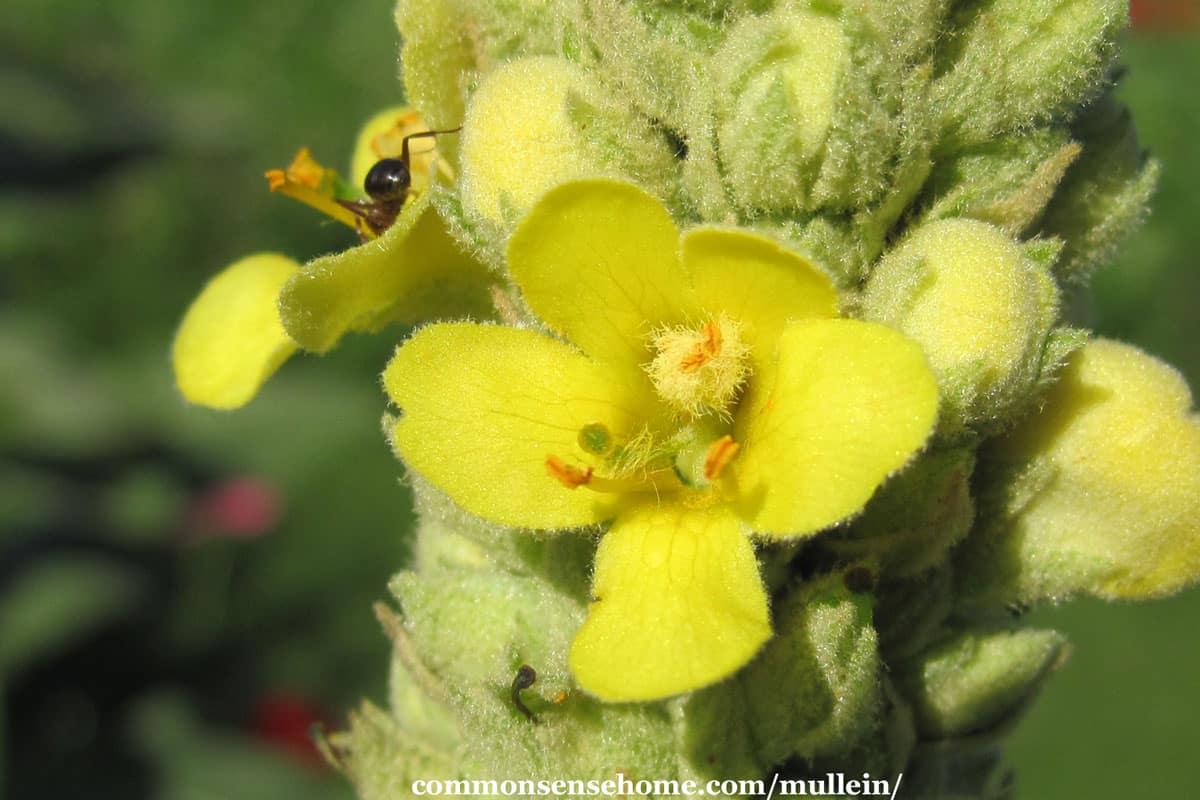
One plant can produce of 100,000 – 240,000 seeds, which can stay viable for decades in the soil, so I don’t let them seed out in the garden. I’m sure there are enough seeds hanging around from previous generations.
Medicinal Uses of Mullein
Mullein has a long history of medicinal use. There are around 300 species of Verbascum, which have similar medicinal properties. Most remedies use the leaves and flowers, but some use roots, too.
Verbascum thapsus is a soothing herb with an affinity for the respiratory system. It calms and strengthens, relieving swelling and inflammation. Try mullein tea for sore throat, coughs, and chest congestion. It’s been widely used to treat tuberculosis.
Try mullein flower oil for a natural earache remedy. You can use the flowers alone, or infused with garlic and/or St. Johns wort. Visit the earache remedies article for infusion instructions.
The study, “Biological activity of common mullein, a medicinal plant” tested mullein extracts for antibacterial and anti tumor activity, with promising results. Another study examined the pharmacological and chemical aspects, and found it demonstrated antiviral activity and improved wound healing.
Native Americans used leaf poultices for many different ailments, including sprains, bruises, and abscesses. Sometimes the leaves were crushed, sometimes boiled, before being applied to the injured area. It’s also used for diarrhea, hemorrhoids, and as a general nerve tonic.
For a simple poultice, place several leaves in a dish and cover them with boiling water. Allow them to cool enough to handle, then place on the affected area. You can wrap the poultice with a bandage to keep it in place, and cover with a hot water bottle to keep it warm. Mini poultices are great for drawing out slivers.
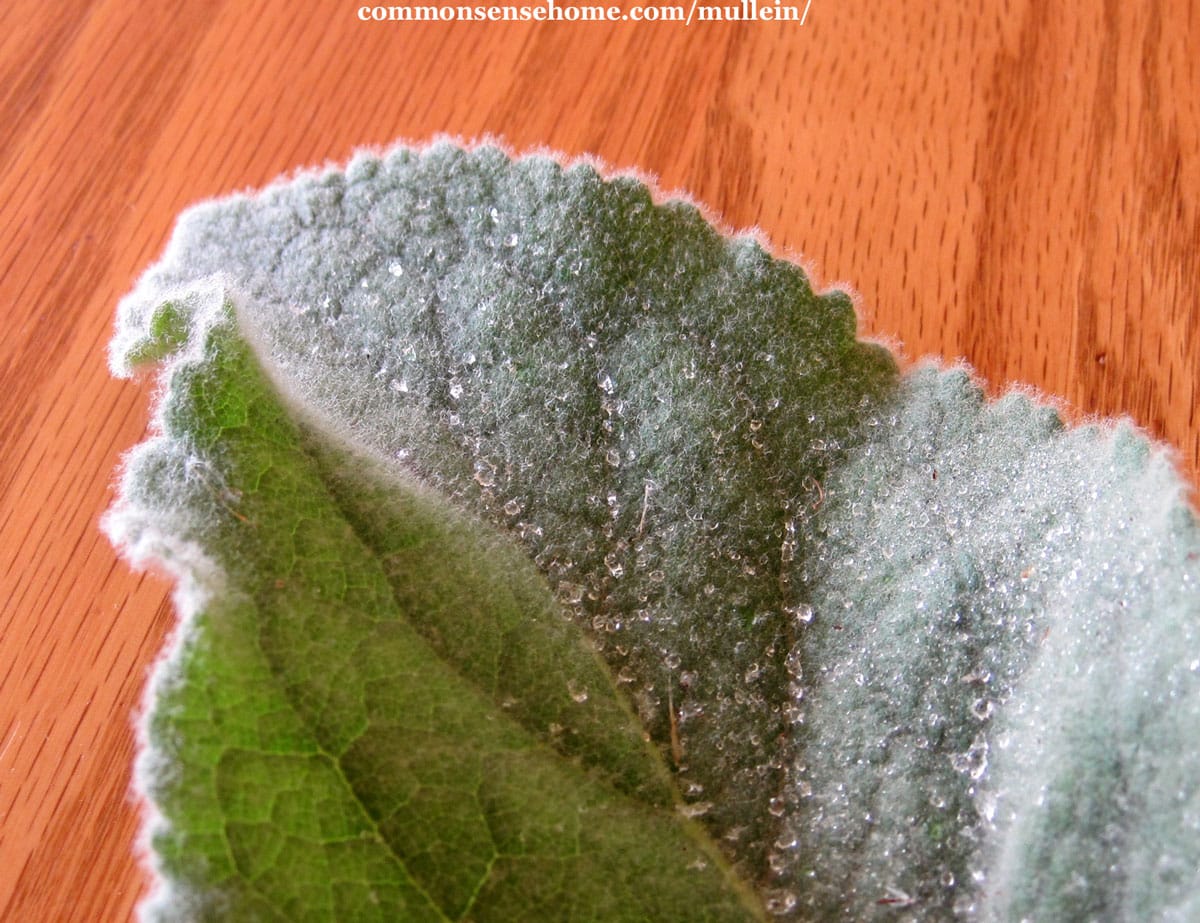
Would you like to save this?
How to Make Mullein Tea
To make mullein tea, add about 1 rounded tablespoon of dried leaves to a mug. (Use slightly more for fresh leaves. Rinse fresh picked leaves before making tea.) Pour boiling water to fill the mug, cover, and steep for 15 minutes.
Strain the tea through a coffee filter or fine strainer to remove the hairs before drinking. Add honey to taste, if desired. You can also include flowers in the tea, if available.
Drink the tea as needed throughout the day. Mullein has no known interactions, though you should always check with your doctor if you are on medications.
Note: This article is for general information purposes only. Please see a trained healthcare professional if you have a serious medical condition, or are breast feeding or pregnant.
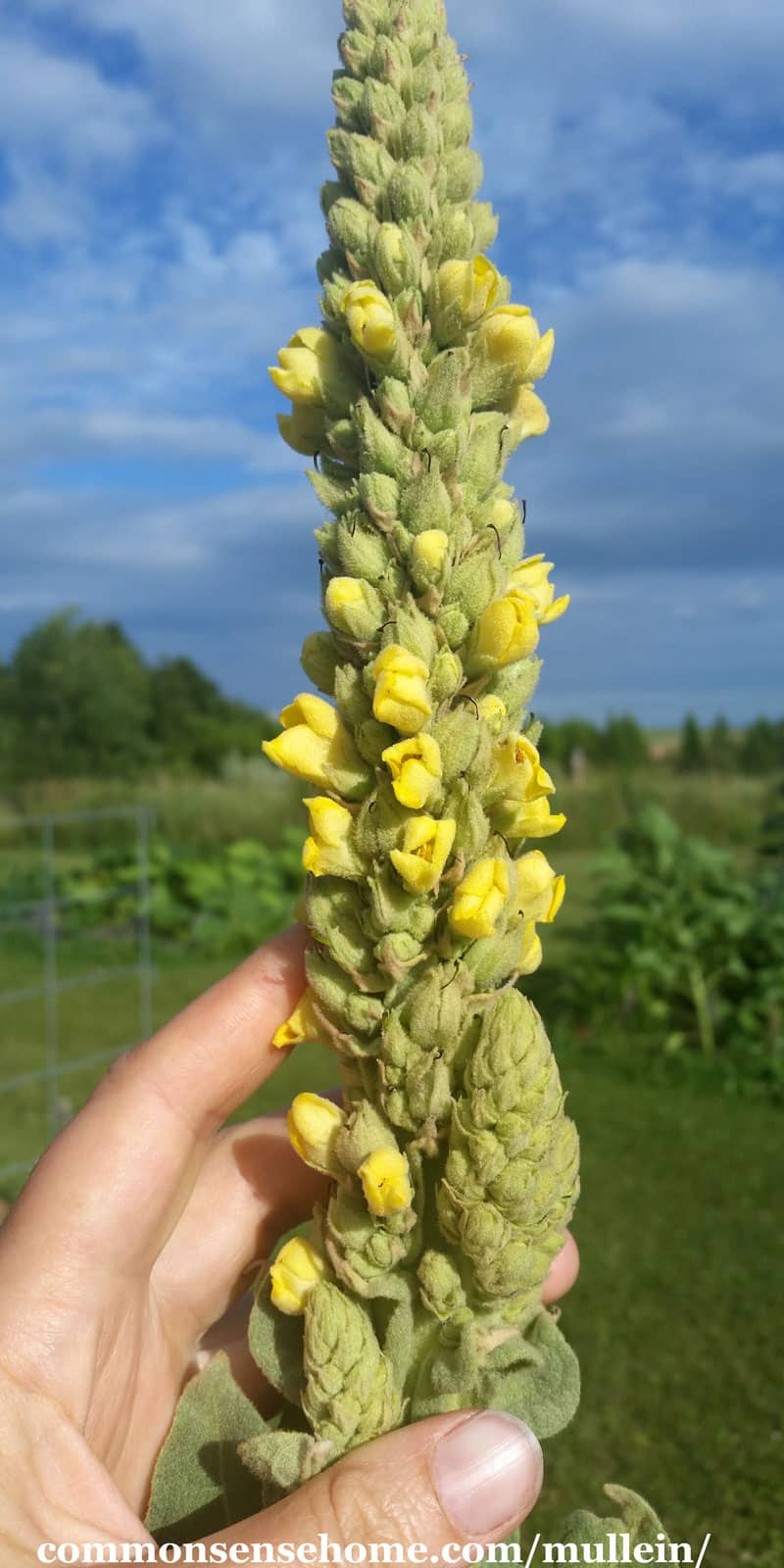
Other Uses of Mullein
Romans soldiers (and others) dipped the dried flower stalks were dipped in tallow and used them as torches. The leaves were placed in footwear as extra padding and to help keep feet warm.
Mullein is sometimes used as a tobacco substitute (or smoked for medicinal use). The seeds have a history of use as a fish poison (piscicide). They release saponins, glycosides, coumarin and rotenone into the water, which stun the fish and bring them to the surface.
The leaves produce a mild irritation/redness when rub against the skin, which led to the plant being used in the Victorian age as rouge. Grazing animals don’t like to eat the plant because the hairs cause irritation. This makes me question the name “cowboy toilet paper”, since I suspect those hairs would irritate your bottom, too.
Mullein can also be using for dying. KingdomPlantae states that, “The flowers make a bright yellow dye, which can be used to dye hair or cloth. The addition of sulfuric acid will produce a color-fast green. If you then add an alkali, to raise the Ph, the dye becomes brown.”
Other Names for Mullein
Common Mullein is also known as Great Mullein, Aaron’s Rod, candlewick plant, flannel plant, flannel leaf, hag taper, shepherd club, lungwort, feltwort, cowboy toilet paper, shepherd’s staff, velvet dock, woolly mullein, torch plant, torches, miner’s candle, big taper, blanket mullein, Hig candlewick, Bullicks lungwort, Hare’s-beard, Ice-leaf, Beggar’s blanket, Moses’ blanket, Poor Man’s blanket, Our Lady’s blanket or Old Man’s Blanket.
(There are more names, but this list is getting pretty long already. Do you get the impression this thing is pretty widespread?)
Note: This is not the same plant as Lambs Ears (Stachys byzantina), which also has fuzzy leaves. Lamb’s ear has purple-pink flowers and a spreading habit.
More Information on How to Use Your Weeds
This is post #13 in the Weekly Weeder series, which teaches you about how to use wild plants for food and medicine. you can see all the posts in the series listed on the Herbs and Wildcrafting Index page.
Some of our most popular articles include:
Yarrow – The “Plant Doctor” for your Yard and Garden
Stinging Nettle – One of Most Useful Wild Plants
Chicory – The Coffee Root Plant
Backyard Medicine is one of my favorite references for wild plants, along with any books by Samuel Thayer for edible uses. I list more of my favorites here.
This article was originally published in 2011, last updated in 2021.

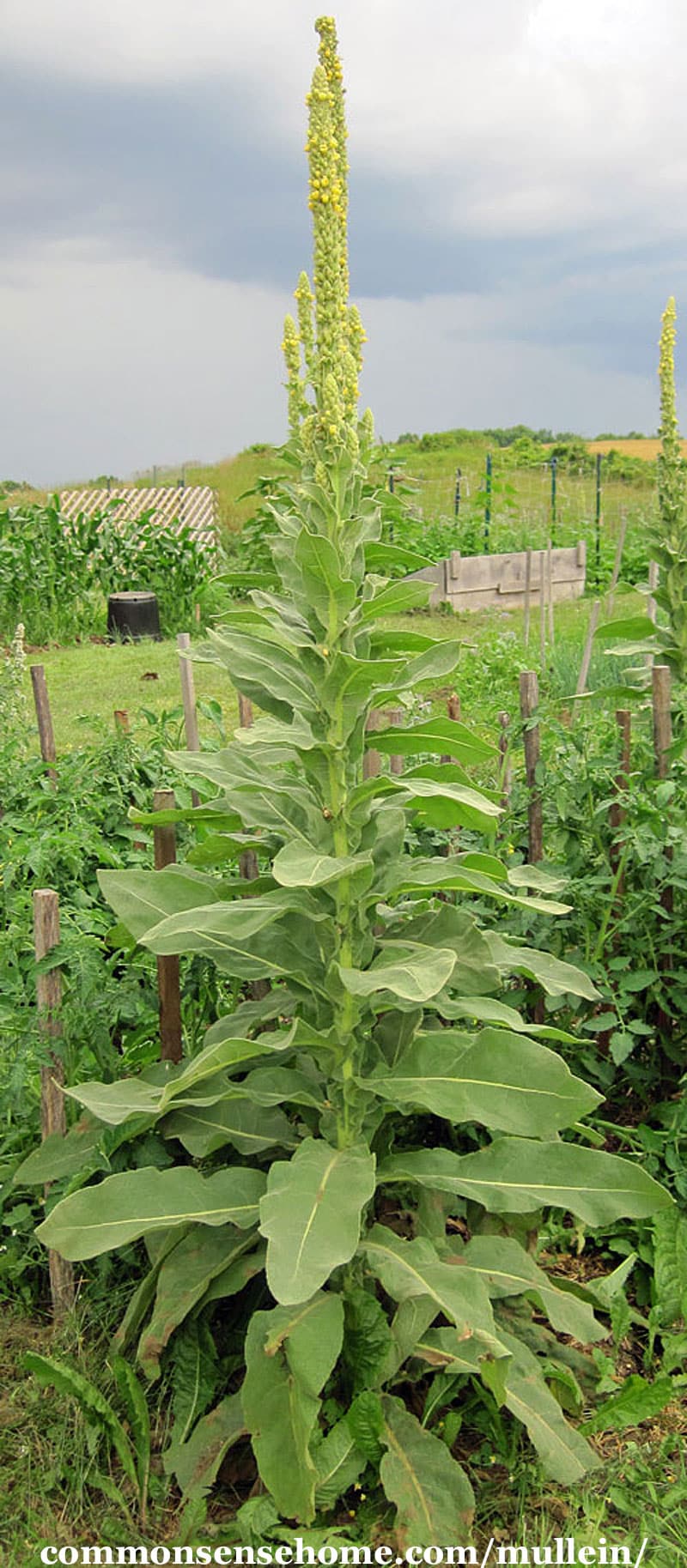
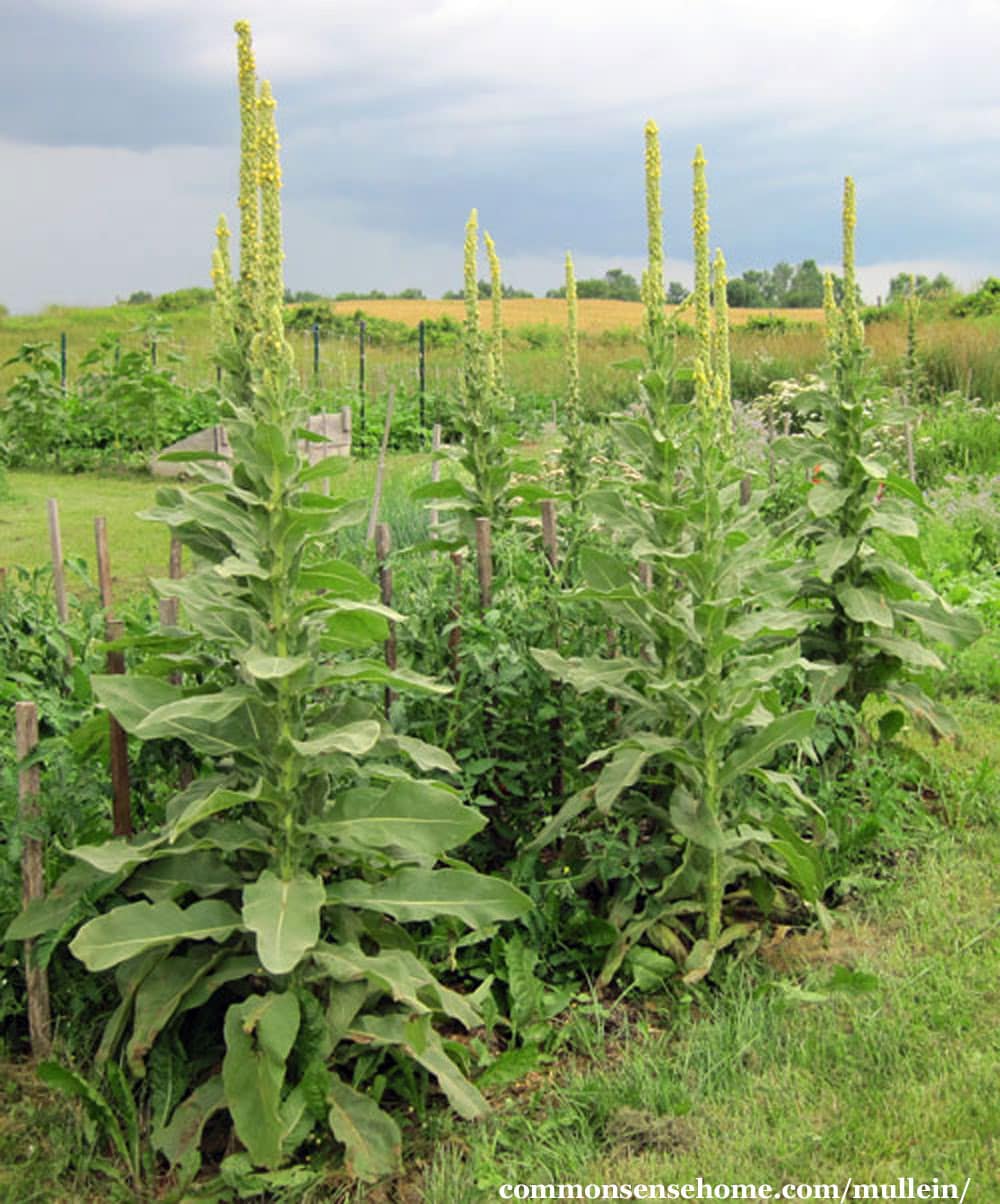
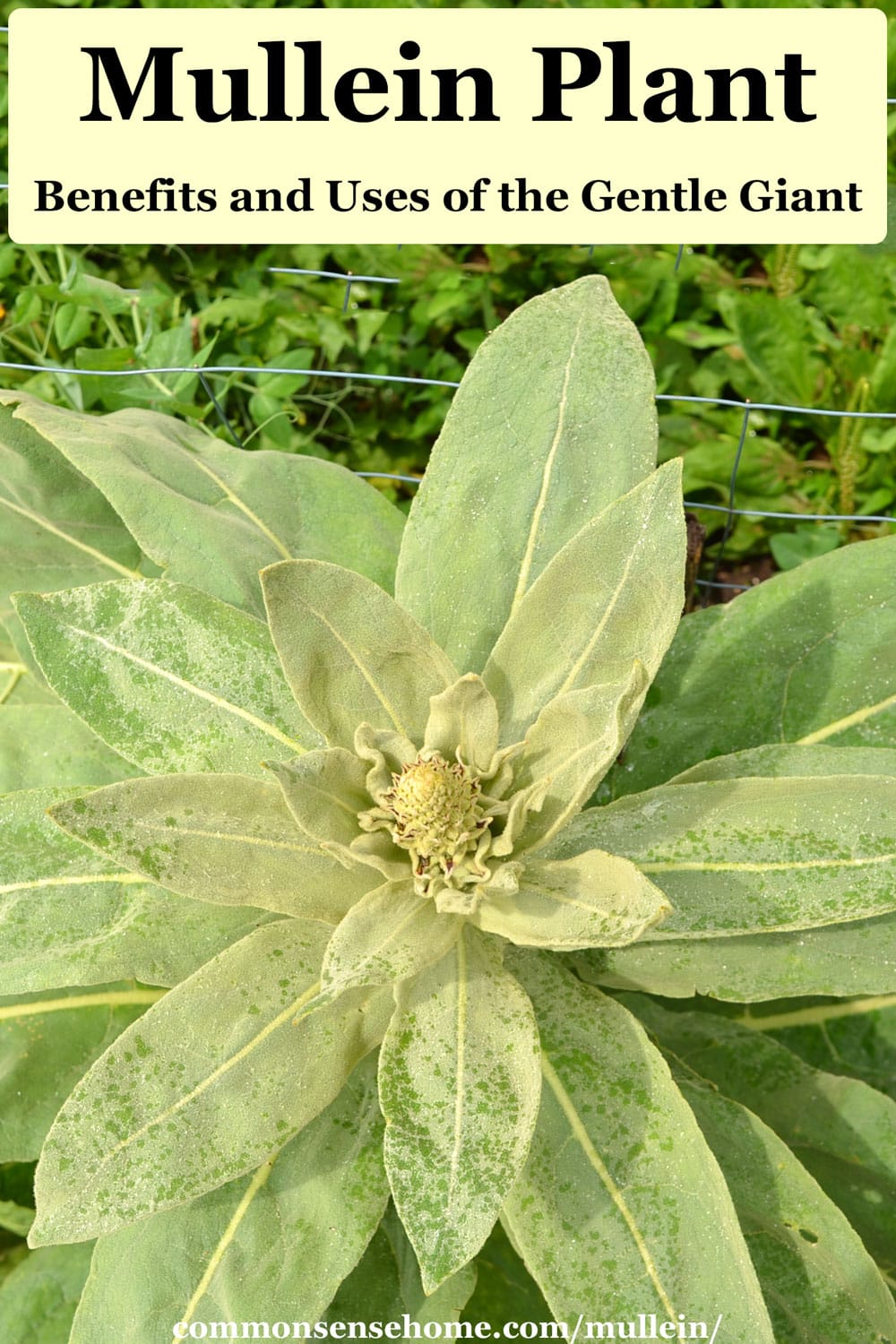
Hi Laurie, where can I buy Mullein and/or Lamb’s Ear seeds?
As your article mentions, I know they are two different plants.
I especially want to grow Lamb’s Ear, but don’t know where to obtain seeds.
Thanks.
I checked, and Strictly Medicinal Seeds carries seeds and plants for both lamb’s ear and mullein (though stock may vary, of course).
Do you get a “”high” if smoked ? I have IV lung and bone cancer
To the best of my knowledge, it does not possess stimulant or psychotropic properties.
I wouldn’t suggest it. Search for “can you smoke mullen plant”. There are things online about it but none I have seen suggest a high. I think you want the “other plant” to smoke for a high. I wish you the best.
Laurie saw your conversation about chickens and mullein. I was wondering if making a tea as posted and putting it into their water would help. I have some hens with a rasp and a cough that seems to come and go. I thought the tea might help. What do you think? Bev
At the very least, it should do no harm. We mix a little garlic powder, oregano flakes, and other herbs into our hen’s food from time to time, too.
How’s your bedding and ventilation situation? Often times respiratory issues are associated with mold or ammonia build up in bedding, which can happen quickly in humid summer conditions.
My plant appeared in a large planter box filled with flowers. This year it is blooming and taking over the other plants. Will it die off after blooming or should I expect to have several more come up? Also, can I trim the leaves at the base so the other plants can get sunlight?
It will die after blooming, but it may reseed, so remove it before the seeds mature if you don’t want more plants to show up.
Yes, you can cut back the leaves at the base some and it will continue blooming, It’s putting it’s energy into the flowers and seeds before it dies a natural death anyway.
Great Mullein is very good in common cough
This is also an invasive plant that will quickly take over prairies and farm fields, just so people are aware. https://www.invasive.org/weedcd/pdfs/wgw/commonmullein.pdf
With proper land management, it shouldn’t be a serious problem. Many plants are classified as invasive, but only become a problem with poor land management. Weeds emerge in response to specific conditions, filling a niche in the ecosystem.
From the book, “Weeds, Control without Poisons“:
The roots are fairly shallow, and can be easily disturbed by cultivation.
I sprained my wrist as a kid, my grandfather told my dad to get the leaves and put them in water, get them nice and hot, don’t melt them, and wrap around my wrist when they have cooled down enough for me to tolerate the warmth. Swelling went down over night and no pain the next day.
Thanks for sharing, Delilah.
Very interesting article and will need to consider harvesting for different uses. We are building in the foothills west of Ft Collins, CO. We have tons of them where we disturbed the ground for building and along the roads. I looked this up because I witnessed a few things. One I rubbed the leaf on the back of my hand and did notice a little irritation. Very mild however. Then the finches, grosbeaks, and woodpeckers are loving them. Yesterday we had a herd of cows come up the mountain (that’s a story in itself) but they were plowing through the draws lopping off spike after spike eating them like it was the best feed they have ever found. That is what prompted me to find out more!
Thanks for sharing your experience.
Fascinating article. Thank you for writing. We came across this plant while walking in Cherry Creek Reservoir, Colorado and were wondering what the plant was called. V. helpful article!
Glad you enjoyed it.
I was wondering if there is a specific time to harvest the mullein leaves? I have loads of them in my pasture and would like to make the tea.
Also, is the tea safe for everyday consumption?
From Meadowsweet Herbs:
I do enjoy your Weekly Weeder posts and since I have a BIG one growing out on The North Fourth, I appreciate learning what it’s useful for. A very good weed to have around, I’d say, especially since I’m always looking for things the Goldfinches love. Thanks so much for your well-written, informative posts.
I’m glad you enjoy them. I love watching the finches bob on flower heads, too.
Thanks from me, too! One of these sprouted in my garden this year and I’ve been trying all summer to identify it. 🙂
…i love the pic’s..where do you live?
don
Northeast Wisconsin, with gently rolling hills and more cows than people.
I have this, having gathered seed from a plant by the road. I have read that pioneers used the large soft leaves as diapers.
Weird because it would not absorb. I’m not sure how this would work out.
Its great to find your website. I am a novice at this, but husband has an earache. Some of these remedies I would have tried, but you have provided lots of useful and helpful choices.
I really want to learn how to grow a few herbs for health purposes and to have natural beauty around and also for food. Will check you out again and the other sites you recommended. I have several little ones around and would prefer natural remedies to sore bought and pharmaceuticals.
Thanks again.
Hi Saundra! Welcome to the site. I’ll be doing more with fresh herbs and wildcrafting again soon that it has finally warmed up outside. I’m glad you find the site useful. You may also enjoy the Home Remedies series of posts.
Ah! The good old “cabbage weed” as I call it! Thrives in our yard in the Australian Capital Territory!
As a child 45 years ago, my great-grandmother would send us to pick Mullein along the railroad tracks (one can always find it growing there in Ohio.) She’d strip off the top leaves and dry them to make Mullein tea for controlling blood pressure and increasing circulation.
Thank you for sharing your story.
I was told that using the “tea” from this plant in a humidifier or teapot can ease asthma symptoms when inhaled. I have not tried this. Have you heard of this use?
I haven’t heard of this use specifically, but it makes sense given the properties of the plant and similar uses.
Looking forward to reading info, looks interesting!
Laurie, thanks for this post–we have tons of mullein on our property. Do you know if it’s safe for chickens to eat? I’ve heard it is toxic to them. I would love to find a use for all the seed heads in the fall and winter.
Marie
It’s probably not the best thing for them to eat in quantity because of the rotenone, but a little is probably fine. After all, wild birds eat it. Here’s more on the subject – http://www.homesteadingtoday.com/livestock-forums/poultry/381476-mullein-seed-safe-poultry.html
If chickens are free range they generally know what to leave like mallow which is poisonous. I wouldn’t worry unless you pick it for them and haven’t seen them eat it. Just watch and see, they generally know.
Hi, I’ve joined up with Wild Craft Wednesday for Jan. 18 with a blog post on making flax seed jelly for cough relief and sore throats. I have a fiber farm and we grow linen (tall flax). We also have a natural dye garden and I use the mullein that grows in our pastures for dye. You don’t need to laboriously harvest the flowers over many days in order to dye with them. Mullein leaves also contain the dye chromophores. But you do need to extract the dye with a alkaline water, rather than just using tap water. A tbsp of baking soda or washing soda does the trick. You also want to use the plant during or after flowering as the plant needs some sunshine and an extended growing season to develop the colour in the leaves. I tried dyeing with the first year rosettes that I weeded out of my garden and only got khaki. So go for the second year leaves.
When you tear the leaves to make a dye bath though, wear a dust mask and gloves. The fine hairs on the leaves are irritating to your skin and to your lungs. Since mullein has insecticidal properties, cloth dyed with mullein may inhibit mosquitoes and moths. I haven’t tested this aspect fully though.
Cheers,
Chris
Chris – thanks so much for your input on this. I haven’t worked with dying yet (not much of a fabric arts person), so I really appreciate hearing from someone with dying experience.
I noticed in the article that it is a skin irritant, I think I will pass on trying
it as toilet tissue.
I know, right? Maybe it bothers some people and not others? It feels soft…
Superb post, I would say thanks to writer becaus i’ve read here a lot useful info. Keep it going! :). Bye!:)
My sister-in-law is starting to work with herbs so I sent her your link. I'm hoping she will start blogging and link up with you. It's a great opportunity to learn.